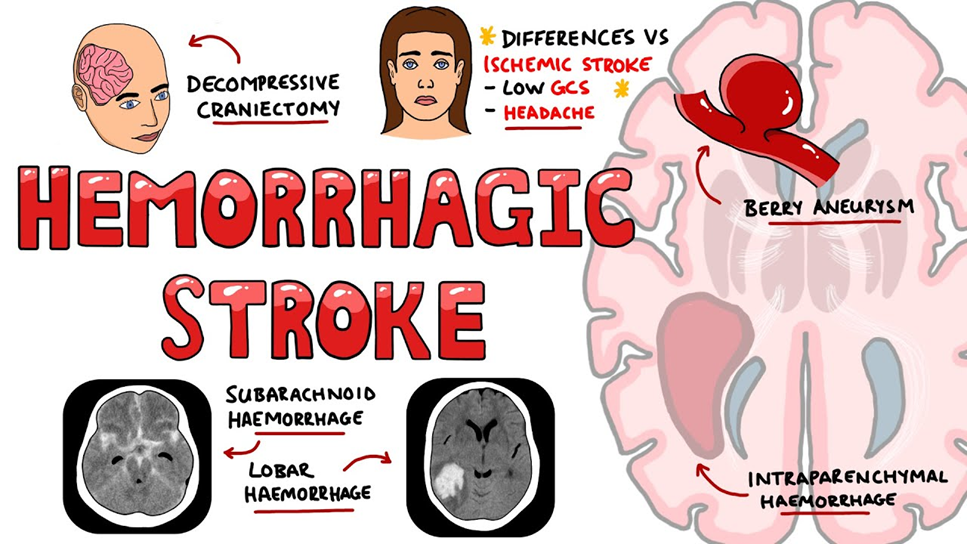The nurse is caring for a client who had a hemorrhagic stroke. Which assessment finding is the earliest sign of increasing intracranial pressure (ICP) for this client?
Severe hypertension
Dilated and nonreactive pupils
Decreased level of consciousness
Projectile vomiting
None
None
The Correct Answer is C
Choice A: Severe Hypertension
Severe hypertension can be a sign of increased intracranial pressure (ICP), but it is not typically the earliest sign. Hypertension often occurs as a compensatory mechanism to maintain cerebral perfusion pressure. While it is a significant finding, it usually follows other more immediate signs of increased ICP.
Choice B: Dilated and Nonreactive Pupils
Dilated and nonreactive pupils are a late sign of increased ICP and indicate severe brainstem compression. This finding suggests that the pressure has reached a critical level, leading to brain herniation. It is a very serious sign but not the earliest indicator of increasing ICP.
Choice C: Decreased Level of Consciousness
A decreased level of consciousness is often the earliest and most sensitive indicator of increasing ICP. Changes in consciousness can range from confusion and lethargy to complete unresponsiveness. This symptom reflects the brain’s response to increased pressure and reduced cerebral perfusion, making it a critical early sign that requires immediate attention.

Choice D: Projectile Vomiting
Projectile vomiting can occur with increased ICP due to pressure on the vomiting centers in the brainstem. However, it is not typically the earliest sign. Vomiting often accompanies other symptoms such as headache and changes in consciousness.
Nursing Test Bank
Naxlex Comprehensive Predictor Exams
Related Questions
Correct Answer is C
Explanation
Choice A Reason:
Nonfat milk is generally considered safe for individuals with GERD. While full-fat dairy products can exacerbate GERD symptoms due to their high-fat content, nonfat milk does not have this effect. It is low in fat and unlikely to trigger acid reflux. Therefore, nonfat milk is not a food that needs to be avoided by someone with GERD.
Choice B Reason:
Apples are typically safe for individuals with GERD. In fact, non-citrus fruits like apples are often recommended as part of a GERD-friendly diet. They are low in acid and unlikely to cause reflux symptoms. Therefore, apples do not need to be avoided by someone with GERD.
Choice C Reason:
Chocolate is a common trigger for GERD symptoms. It contains caffeine and theobromine, both of which can relax the lower esophageal sphincter (LES), allowing stomach acid to escape into the esophagus and cause reflux. Additionally, chocolate is high in fat, which can further exacerbate GERD symptoms. Therefore, it is advisable for individuals with GERD to avoid chocolate to prevent worsening of their symptoms.
Correct Answer is ["B","C","D"]
Explanation
Choice A Reason:
Administering 0.45% NS (normal saline) at 50 mL/hr is not appropriate for a client with SIADH. This hypotonic solution can exacerbate the condition by increasing the water retention and further diluting the serum sodium levels, worsening hyponatremia. Instead, fluid restriction and hypertonic saline (such as 3% saline) are typically used to manage SIADH.
Choice B Reason:
Obtaining daily weight is crucial in managing SIADH. Daily weights help monitor fluid retention and detect any sudden changes in body weight, which can indicate worsening fluid overload or effective treatment. Accurate weight measurements are essential for assessing the client’s fluid balance and guiding treatment decisions.
Choice C Reason:
Maintaining seizure precautions is necessary for clients with SIADH because severe hyponatremia can lead to neurological symptoms, including seizures. Implementing seizure precautions helps ensure the client’s safety and allows for prompt intervention if a seizure occurs.
Choice D Reason:
Administering 3% saline as ordered is appropriate for treating severe hyponatremia in SIADH. Hypertonic saline helps increase serum sodium levels and reduce the risk of neurological complications. It must be administered carefully and under close monitoring to avoid rapid correction of sodium levels, which can lead to osmotic demyelination syndrome.
Choice E Reason:
Encouraging fluid intake is not appropriate for clients with SIADH. Fluid restriction is a key component of managing SIADH to prevent further dilution of serum sodium levels. Encouraging fluid intake would counteract this goal and worsen the client’s condition.
Whether you are a student looking to ace your exams or a practicing nurse seeking to enhance your expertise , our nursing education contents will empower you with the confidence and competence to make a difference in the lives of patients and become a respected leader in the healthcare field.
Visit Naxlex, invest in your future and unlock endless possibilities with our unparalleled nursing education contents today
Report Wrong Answer on the Current Question
Do you disagree with the answer? If yes, what is your expected answer? Explain.
Kindly be descriptive with the issue you are facing.
